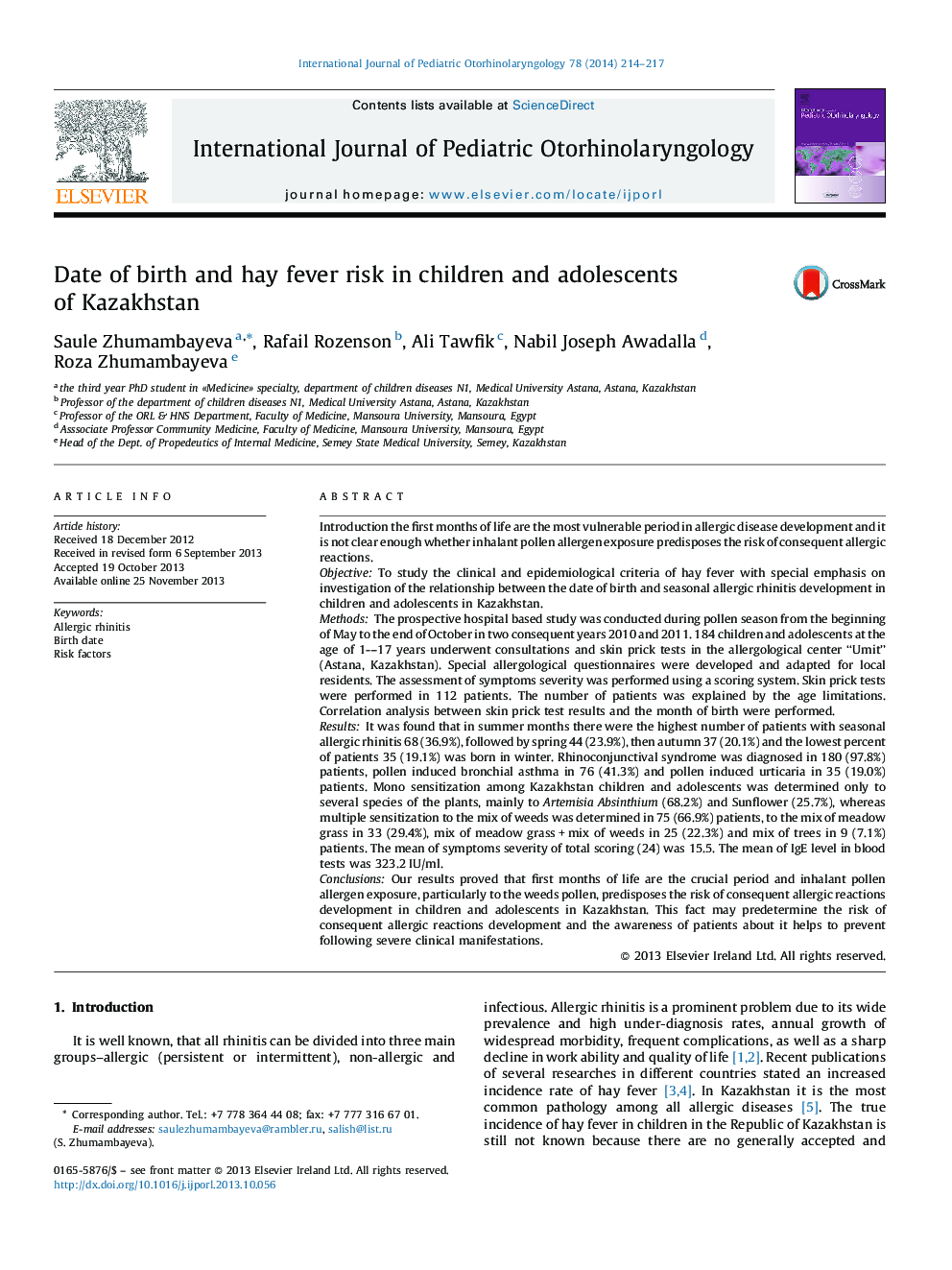| کد مقاله | کد نشریه | سال انتشار | مقاله انگلیسی | نسخه تمام متن |
|---|---|---|---|---|
| 6213804 | 1606011 | 2014 | 4 صفحه PDF | دانلود رایگان |
Introduction the first months of life are the most vulnerable period in allergic disease development and it is not clear enough whether inhalant pollen allergen exposure predisposes the risk of consequent allergic reactions.ObjectiveTo study the clinical and epidemiological criteria of hay fever with special emphasis on investigation of the relationship between the date of birth and seasonal allergic rhinitis development in children and adolescents in Kazakhstan.MethodsThe prospective hospital based study was conducted during pollen season from the beginning of May to the end of October in two consequent years 2010 and 2011. 184 children and adolescents at the age of 1-–17 years underwent consultations and skin prick tests in the allergological center “Umit” (Astana, Kazakhstan). Special allergological questionnaires were developed and adapted for local residents. The assessment of symptoms severity was performed using a scoring system. Skin prick tests were performed in 112 patients. The number of patients was explained by the age limitations. Correlation analysis between skin prick test results and the month of birth were performed.ResultsIt was found that in summer months there were the highest number of patients with seasonal allergic rhinitis 68 (36.9%), followed by spring 44 (23.9%), then autumn 37 (20.1%) and the lowest percent of patients 35 (19.1%) was born in winter. Rhinoconjunctival syndrome was diagnosed in 180 (97.8%) patients, pollen induced bronchial asthma in 76 (41.3%) and pollen induced urticaria in 35 (19.0%) patients. Mono sensitization among Kazakhstan children and adolescents was determined only to several species of the plants, mainly to Artemisia Absinthium (68.2%) and Sunflower (25.7%), whereas multiple sensitization to the mix of weeds was determined in 75 (66.9%) patients, to the mix of meadow grass in 33 (29.4%), mix of meadow grass + mix of weeds in 25 (22.3%) and mix of trees in 9 (7.1%) patients. The mean of symptoms severity of total scoring (24) was 15.5. The mean of IgE level in blood tests was 323.2 IU/ml.ConclusionsOur results proved that first months of life are the crucial period and inhalant pollen allergen exposure, particularly to the weeds pollen, predisposes the risk of consequent allergic reactions development in children and adolescents in Kazakhstan. This fact may predetermine the risk of consequent allergic reactions development and the awareness of patients about it helps to prevent following severe clinical manifestations.
Journal: International Journal of Pediatric Otorhinolaryngology - Volume 78, Issue 2, February 2014, Pages 214–217
